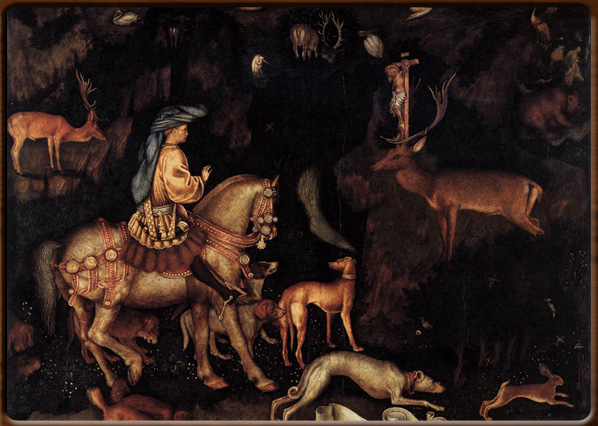
St. George and the Princess, détail, Antonio Pisanello, 1436-1438, Church of St. Anastasia, Verone.

St. Eustach's Vision, Antonio Pisanello, 1436, National Gallery, London.


No video
Antonio Pisano , known as “Pisanello” (Verona? c. 1395–1455), was a painter and medallist.
Having trained in the style of Gentile da Fabriano (whose frescoes he continued in the Doge’s Palace in Venice, 1415-22), he was also influenced by the Lombard school. He had an elegant fairytale-like style, developing to perfection the international Gothic formal style and a certain naturalism very similar to the contemporary Tuscan Renaissance style.
His major works include: the splendid fresco of St. George and the Princess (1429, Church of Sant’Anastasia in Verona); St. George, the Princess and the Dragon (1433-38, Palazzo Forti, Verona); Madonna della Quaglia (c. 1420, Civic Museum of Castelvecchio, near Verona); Annunciation (1426, fresco in the Basilica of San Fermo Maggiore, Verona); St. Eustach’s Vision (1436-38, The National Gallery, London); Portrait of Princess d’Este (1436-38, Musee du Louvre, Paris).
Pisanello is also famous for his medals, considered the most beautiful in the history of Italian art for their carefully carved designs and delicate elegant relief.
1300 - 1400 - - rev. 0.1.8